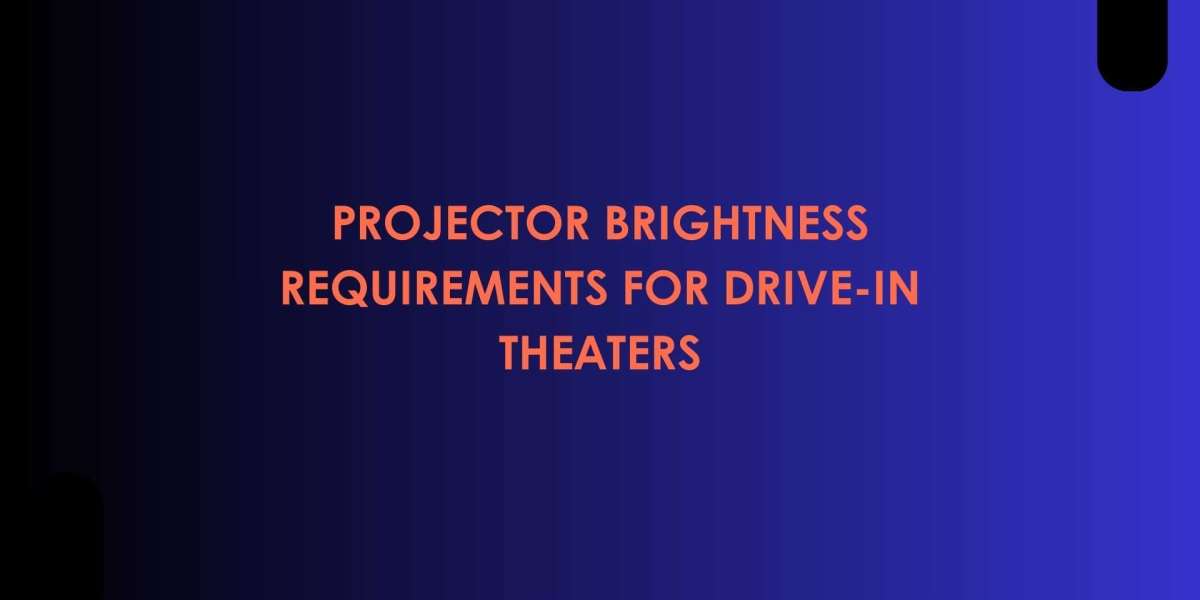When it comes to outdoor cinema, drive-in theaters hold a unique charm that combines entertainment with nostalgia. They offer a communal experience where people can enjoy movies under the open sky while maintaining the comfort of their cars. However, for these experiences to be successful, the quality of projection plays a central role. A drive-in theater requires much more from a projector than a typical home setup or indoor cinema. The key factor that makes or breaks the experience is brightness. At XTEN-AV, we understand how crucial it is to choose the right projector brightness to ensure crystal-clear visuals even in challenging outdoor environments. This blog explores Projector Brightness Requirements for drive-in theaters and why they matter so much.
Why Brightness Matters for Drive-In Theaters
Unlike indoor setups where lighting conditions can be controlled, drive-in theaters must contend with natural and ambient light. Even after sunset, sources like streetlights, nearby buildings, and car headlights can interfere with the screen’s visibility. This means that projectors for drive-in theaters must deliver extremely high brightness levels to ensure sharp, vivid images visible to all attendees.
Brightness determines how well the picture can cut through ambient light and reach large audiences on massive screens. Without the proper brightness, images can look washed out, dull, or even completely unwatchable. That is why Projector Brightness Requirements for drive-in theaters are significantly higher than those for home or indoor applications.
Understanding Projector Brightness Measurements
Projector brightness is measured in lumens. The higher the lumen rating, the brighter the projector’s output. For drive-in theaters, the size of the screen and the distance between the projector and the screen add additional challenges. Larger screens naturally require more brightness to ensure clarity and detail.
For example, a home theater might work well with a 2,000 to 3,000-lumen projector in a dark room. In contrast, a drive-in theater may require anywhere between 20,000 to 50,000 lumens or even higher depending on screen size and seating capacity. Meeting these Projector Brightness Requirements ensures the audience has a cinematic experience comparable to indoor movie theaters.
Factors That Influence Brightness Needs
Several factors influence the exact projector brightness required for a drive-in theater. Let’s look at the most important ones.
1. Screen Size
Drive-in theaters typically use massive screens, often ranging from 40 to 100 feet in width. A larger screen surface demands more light output to achieve the same level of brightness across the entire area. This means higher lumens are a non-negotiable requirement.
2. Audience Distance
Since viewers are seated at varying distances, the projector must maintain consistent brightness and clarity even for those at the far end of the lot. Higher lumen ratings help ensure the projection remains visible and detailed from every angle.
3. Ambient Light Conditions
Though most drive-in theaters operate after sunset, ambient light sources like streetlamps or even the moon can affect visibility. In urban areas with high light pollution, the Projector Brightness Requirements go up significantly compared to rural locations.
4. Projection Distance
The distance between the projector and the screen can also impact brightness. A longer throw distance means the light has to travel farther, which can reduce the effective brightness unless compensated with a higher lumen projector.
5. Screen Material and Gain
The reflective surface of the screen plays a role too. A higher gain screen reflects more light back to the audience, helping maximize brightness. However, in most large-scale drive-in theaters, the screen gain is balanced to avoid hot spots, so brightness from the projector itself remains the key factor.
Recommended Projector Brightness Levels for Drive-In Theaters
Based on these factors, here are general guidelines for Projector Brightness Requirements in drive-in theaters:
Small Drive-In Theaters (up to 200 cars, 40-50 ft screen): 20,000 to 30,000 lumens
Medium Drive-In Theaters (200-400 cars, 60-70 ft screen): 30,000 to 40,000 lumens
Large Drive-In Theaters (400+ cars, 80-100 ft screen): 40,000 to 50,000 lumens or higher
These ranges are not absolute but serve as a baseline. The actual requirement can vary depending on environmental factors and specific screen setups.
Balancing Brightness and Image Quality
While brightness is critical, it is not the only factor in projection quality. Drive-in theater operators must also consider resolution, contrast ratio, and color accuracy. A high-lumen projector with poor resolution may produce bright but blurry images. Therefore, the ideal choice is a projector that balances brightness with 4K or higher resolution, excellent contrast, and wide color gamut support.
Lamp vs Laser Projectors
Another key decision for drive-in theaters is whether to use lamp-based or laser projectors.
Lamp Projectors: Traditionally used in cinema setups, these can deliver high brightness but often require frequent maintenance and bulb replacements.
Laser Projectors: These are becoming the standard for modern drive-in theaters. They offer higher brightness levels, longer lifespan, lower maintenance costs, and better color performance. Laser projectors are especially suited to meet the demanding Projector Brightness Requirements of outdoor cinema.
The Role of XTEN-AV in Drive-In Theater Design
At XTEN-AV, we specialize in designing projector solutions tailored to specific applications. Our expertise helps theater operators evaluate critical factors like screen size, audience distance, and ambient light levels to determine the best projector specifications. Using advanced tools, including Projector Placement Calculators and brightness analysis, we ensure that every seat in the drive-in theater delivers an immersive movie experience.
Energy Efficiency and Sustainability
High brightness projectors naturally consume more energy, which can increase operational costs. However, modern laser projectors are not only brighter but also more energy efficient. This means theater operators can reduce their long-term expenses while still meeting the necessary brightness requirements. Energy efficiency is particularly important for operators planning to run frequent shows.
Conclusion
Drive-in theaters have resurged in popularity, offering a unique blend of community entertainment and outdoor charm. To ensure audiences have the best possible experience, Projector Brightness Requirements must be carefully evaluated. From screen size and audience distance to ambient light and projection technology, many factors influence how bright a projector needs to be. With brightness levels ranging from 20,000 to 50,000 lumens or more, drive-in theaters require some of the most powerful projectors available today.
XTEN-AV makes this process easier by providing expert guidance and advanced tools to design projector systems tailored to outdoor cinema needs. By combining high brightness with cutting-edge technology like laser projection, operators can deliver unforgettable experiences for their audiences night after night.
Read more: https://enkling.com/read-blog/26413



